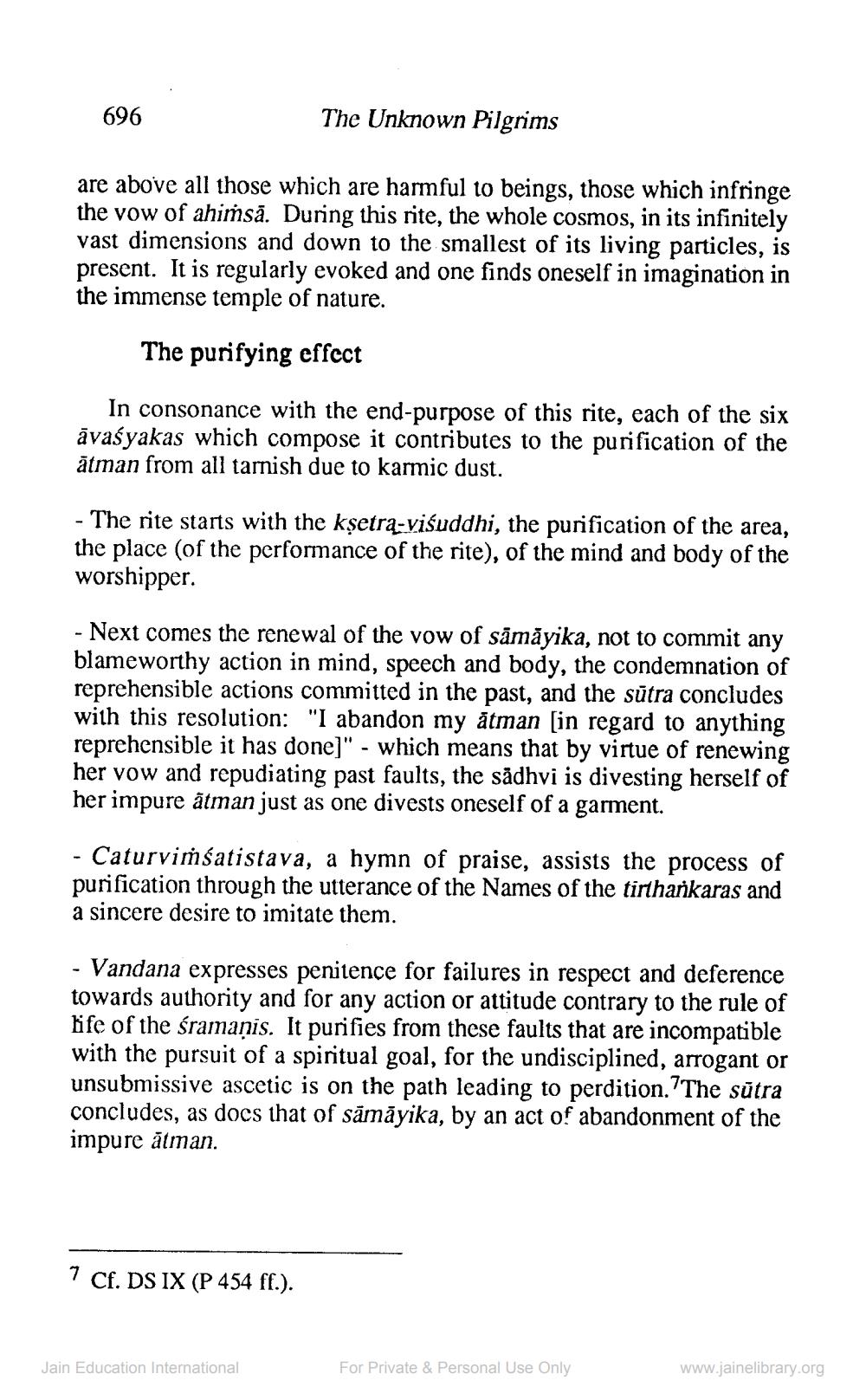________________
The Unknown Pilgrims
are above all those which are harmful to beings, those which infringe the vow of ahimsa. During this rite, the whole cosmos, in its infinitely vast dimensions and down to the smallest of its living particles, is present. It is regularly evoked and one finds oneself in imagination in the immense temple of nature.
The purifying effect
In consonance with the end-purpose of this rite, each of the six āvasyakas which compose it contributes to the purification of the ätman from all tarnish due to karmic dust.
-
The rite starts with the kṣetra-viśuddhi, the purification of the area, the place (of the performance of the rite), of the mind and body of the worshipper.
696
-
Next comes the renewal of the vow of sāmāyika, not to commit any blameworthy action in mind, speech and body, the condemnation of reprehensible actions committed in the past, and the sutra concludes with this resolution: "I abandon my atman [in regard to anything reprehensible it has done]" - which means that by virtue of renewing her vow and repudiating past faults, the sadhvi is divesting herself of her impure ätman just as one divests oneself of a garment.
- Caturviṁśatistava, a hymn of praise, assists the process of purification through the utterance of the Names of the tirthankaras and a sincere desire to imitate them.
Vandana expresses penitence for failures in respect and deference towards authority and for any action or attitude contrary to the rule of life of the śramanis. It purifies from these faults that are incompatible with the pursuit of a spiritual goal, for the undisciplined, arrogant or unsubmissive ascetic is on the path leading to perdition. The sutra concludes, as docs that of sāmāyika, by an act of abandonment of the impure atman.
7 Cf. DS IX (P 454 ff.).
Jain Education International
For Private & Personal Use Only
www.jainelibrary.org




